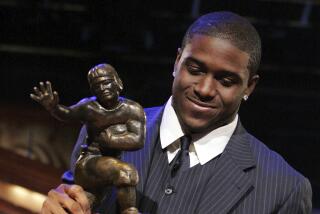Awarding Without Offending
- Share via
A major corporation establishes a program acknowledging an outstanding student from each of the local high schools. Students will be recognized at awards ceremonies at the city’s professional basketball games in front of 20,000 spectators. At the first event, the honored student is Nai, a Hmong student (originally from the mountainous area of Laos), unanimously chosen for academic achievement and service by classmates and faculty of his school. Nai and his uncle arrive at the game, and when it is time to present the young man to the fans, sponsors usher the uncle away to give full prominence to Nai, but good intentions boomerang. Instead of feeling honored, Nai is mortified.
What did it mean?
After checking with diversity advisors, company representatives discovered that Nai should have been given a more careful explanation of the event in advance of the ceremony, emphasizing the honor of representing his school.
Separating Nai from his uncle was traumatic, too. In Hmong culture, the family is honored over honoring the individual. Being particularly shy, Nai felt uncomfortable being singled out. To compound his discomfort, he was barely 5 feet tall and felt intimidated when forced to be photographed next to 7-foot players. The company learned from its mistakes. At subsequent honors ceremonies, awardees were given a 45-minute orientation before the event; relatives were allowed to remain at the edge of the court and instead of having their pictures taken with athletic giants, students took photos with the referee, someone usually closer to their own height.
More to Read
Go beyond the scoreboard
Get the latest on L.A.'s teams in the daily Sports Report newsletter.
You may occasionally receive promotional content from the Los Angeles Times.










